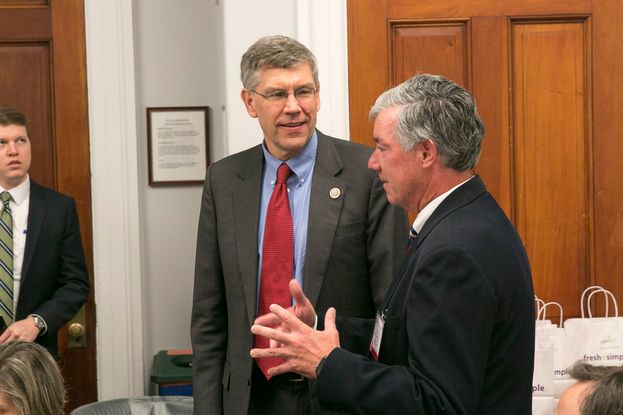Drug Prices: Leading the Fight for Affordable, Accessible Treatments
Issue
U.S. ophthalmic drug costs have risen steadily in recent years. Some dramatic price spikes are disrupting patient care. When the costs for important treatments spiral out of control, our patients – especially those with limited financial means – cannot bear the burden.
The growing cost of drugs is forcing our patients to make important choices based on economic realities, rather than their health.
The Trump administration is now taking steps to address this issue. Its officials have indicated an interest in potential reforms to Part B drug payments to physicians. We’ll need to be at the table for that conversation; our Part B treatments are among the nation’s most expensive and of particular interest to policy makers. Some of the ideas floated around Washington, D.C., like bringing step therapy to Medicare, would be detrimental to our patients’ care.
Our position is that our patients need relief from sudden cost spikes, but as physicians, we also need access to the treatments that are required day in and day out.
The Academy is also increasingly worried about nationwide drug shortages for ophthalmic drugs. Ophthalmology is presently weathering a nationwide fluorescein-strip shortage, with no region or demographic spared from the damage that a lack of access can cause. The Academy believes this is a crisis and must be a top federal priority.
Academy Action
Drug prices is among the Academy’s top advocacy issues; you can trace our interest in this issue back to 2014. With the Trump administration and Congress eyeing reforms, we’re playing a particularly bold role in today’s conversations. We’ve taken proactive steps to highlight drug shortages, access issues and market fluctuations. Our goal is to preserve physician and patient choice.
We’re engaging directly with Trump administration officials. We’re also aiming our lobbying efforts at Congress, where some action on drug prices may be legislated. In the coming months, we’ll educate elected officials about our position to ensure their support if and when Congress decides to act on this issue.
In response to a Trump administration request for stakeholder feedback, we warned against payment policies that would drive prescribing but affect ophthalmology’s ability to secure all the treatments our patients need.
We focus on choice, marketplace competition and physicians’ participation in test programs use to determine a policy’s effectiveness.
Choice
It is paramount that physicians and patients are able to make decisions regarding what is best for their care. For example, our profession’s Part B drugs could be targets for reform due to their expense, especially those used to treat neovascular age-related macular degeneration.
However, there is strong clinical consensus that individual patients may respond differently to the three drugs. Therefore, ophthalmologists need access to all available treatment options.
Marketplace competition
The Academy calls for more competition in the drug marketplace, which would include accelerated drug review for sole-source drugs. We also support closing loopholes already identified by the Trump administration that allow drug makers to “game the regulatory process.” These include barring gag clauses that prevent pharmacists from sharing drug-cost information with patients and physicians.
Optional test programs
Should the Trump administration use demonstrations to test new policies, participation should be voluntary. These demonstrations should also be small in scale. That’s especially important for ophthalmology, for which we seek to minimize unintended consequences on beneficiaries.
We’re participating in a multi-stakeholder effort to get to the bottom of drug shortages. Even as we engage the Food and Drug Administration on this issue, we are also partnering with the American College of Emergency Physicians and the American Society of Anesthesiologists to urge federal policy makers to take this national health crisis seriously.

Daniel J. Briceland, MD, right, the Academy's senior secretary for advocacy, takes a moment to brief Rep. Erik Paulsen, R-Minn., on the Academy's advocacy slate.
Impact
The Academy is known in Washington, D.C. as one of the most persistent and knowledgeable medical societies advocating for sensible reforms that will lower costs for prescription drugs in the United States. We are sought out by policy makers for our patient-centered perspective, as well as our up-to-date data of which drugs are suddenly experiencing price spikes.
Federal lawmakers and policy experts come to the Academy knowing that we have access to this information for ophthalmology. This is giving us a strong footing on which to stand as the Trump administration turns its interest in drug prices into actual policies.
Our reputation affords us access that others in medicine can’t get. We’ve met directly with the White House Office of Management and Budget and top leaders at the U.S. Department of Health and Human Services. The intel we’ve gained during these meetings will help us ensure that our shared goal of reducing costs isn’t achieved by limiting access to important treatments.